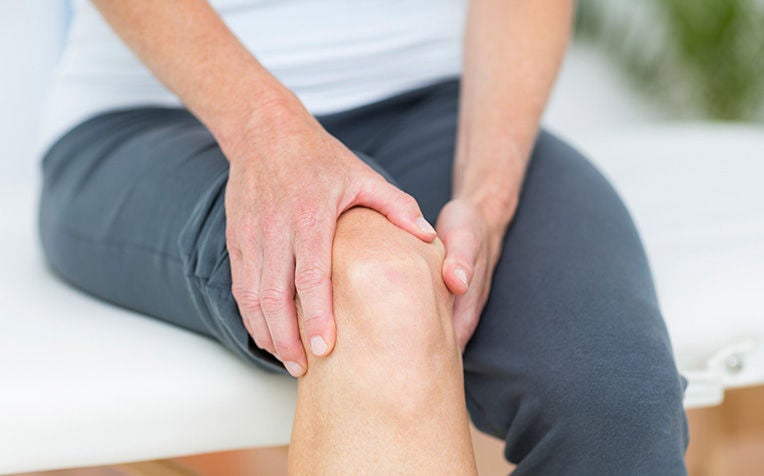
Knee pain and swelling are common symptoms of a knee injury.
Ligament injury
The knee has four ligaments, or tough bands of tissues, that stabilise the joint. The most commonly injured ligament is the anterior cruciate ligament (ACL). Preventing abnormal sideways motion of the knee are the collateral ligaments – the medial collateral ligament (MCL) and the lateral collateral ligament (LCL), which are located on the inside and outside respectively, of the knee.
Anterior cruciate ligament (ACL)
Causes
- The ACL is the most commonly injured ligament of the knee. It is usually injured because of a rapid or abnormal twisting motion such as when the knee stops or changes direction suddenly.
- The ACL can also be injured when the knee twists on landing, or as a result of a direct contact or collision, such as during a soccer tackle.
Symptoms
- Immediate pain right after ligament injury.
- Swelling of the affected knee within 4 to 12 hours.
- A popping sound when the ligament ruptures.
- Difficulty with knee movement.
- Walking with a painful limp.
- Feeling of instability, with the knee giving way during sports or daily activities.
Posterior cruciate ligament (PCL)
The articular cartilage is the smooth covering at the end of the bones that allows for frictionless gliding of one bone against another. It also acts as a shock absorber.
Causes
- The surface can be damaged by direct trauma or through chronic wear and tear.
Symptoms
- Recurrent knee pain
- Swelling of the knee
- May experience difficulty straightening or bending the knee
- There may be audible ‘clicks’ on knee movement
Diagnosis for ACL and PCL injuries
- Usually made on case history and clinical examination.
- An x-ray of the knee will rule out associated fractures.
- An MRI may also be ordered to rule out other injuries to the meniscus or cartilage.
Collateral ligaments
- Injuries to the collateral ligaments, like the medial collateral ligament (MCL) and lateral collateral ligament (LCL), are usually caused by a direct blow to the side of the knee, or a twisting injury. It may occur in isolation or together with ACL or PCL injuries.
- Diagnosis is usually made on case history and clinical examination.
- Symptoms include pain and swelling at the site of injury and the knee may feel unstable.
Treatment for ligament injury
- Treatment for ligament injury includes rest, elevation and ice therapy of the affected limb.
- Crutches to take some weight off the knee, and braces to support the knee, may also be prescribed.
- Physiotherapy to strengthen the supporting muscles and increase the range of motion will normally be part of the treatment.
- Depending on your situation, your doctor may recommend you undergo surgery for ligament repair or reconstruction.
Ref. S13
Also, check out our other articles on pain of the leg and feet:
Knee Osteoarthritis (OA Knee): Symptoms, Tips, Treatment and Exercises
Home Remedies for Knee Pain and Shin Splints
Runner's Knee: What It Is and How to Prevent
Tips to Prevent Common Running Injuries
Contributed by















 Get it on Google Play
Get it on Google Play